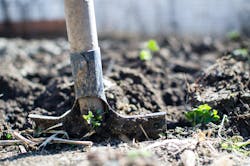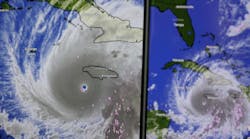Unique, Dark Wetland Soil Identified on California's Central Coast
Soil identification allows scientists to identify how the soil formed, how it will behave in various scenarios, and how valuable it may be to plants and animals. Scientific identification and classification of soil can also allow researchers to determine if the soil is healthy, safe for hiking, or fosters a unique ecosystem.
Although many soils are easy for trained scientists to identify, Karen Vaugh of the University of Wyoming and her team recently investigated areas of soil along the central coast of California with some unusual characteristics. The research was published in the Soil Science Society of America Journal.
“The reason for this research site really comes from long ago in a wetlands field lab,” she says. “Students kept saying the soil didn’t meet all the field indicators of hydric—or wetter—soils. I thought, it has to. It’s wet and there’s plenty of water-loving vegetation. Then I realized it must be a problematic soil, so we set up this experiment to figure it out.”
The characteristics used to identify soils include texture, color, air and water content, mineral composition, and more. Vaughan’s experiment consisted of studying how dark the color of the soil was, as well as its water content, vegetation, and chemical composition. Looking at how wet the soils seemed, the vegetation that grew there, and microbes that lived there, a scientist would think they were wetland soils. However, other characteristics of the soil, such as its dark color, confused the researchers because it was so similar to the surrounding drier soil. This is where a way to analyze soil color more precisely, called the profile darkness index, was helpful. It allowed them to properly classify the soils.
Usually, soil classification is a relatively exact science. One of the key characteristics of hydric soils is a pale, light greyish color. The uniquely dark color of the soil Vaughn's team examined could allow it to be mistakenly identified as a drier soil, not meeting the requirements of wetlands.
The landscape also provided classification clues. The steep slopes in the region the team worked are prone to landslides, which deposit soil in other areas and can result in depressions where soil can be wetter than might be expected, given the surroundings. When combined with the wetland hydrology and water-loving vegetation the researchers found, the area could be classified as hydrologically isolated wetlands—wetlands that aren't connected to other surface water bodies, but part of the groundwater-flow system.
“We get these situations where the soil characteristics don’t match features we usually see in wetter soils,” Vaughan explains. “This is, for example, because the transported soils inherited darker colors from the parent material. If someone looked at these soils, they would assume they are not as wet as they are. They then would not classify these areas as wetlands, despite them performing as wetlands.”
“This kind of proper identification is important so the wetlands can be better conserved,” Vaughan says. “If researchers don’t know about them, they can’t be protected.”
Wetlands can help store water to protect against floods and erosion and improve water quality. They also serve as a place for important plants and animals to live.
“Soils tells the story of an ecosystem,” she says. “If we look to the soil, we can understand ecosystem function.”


